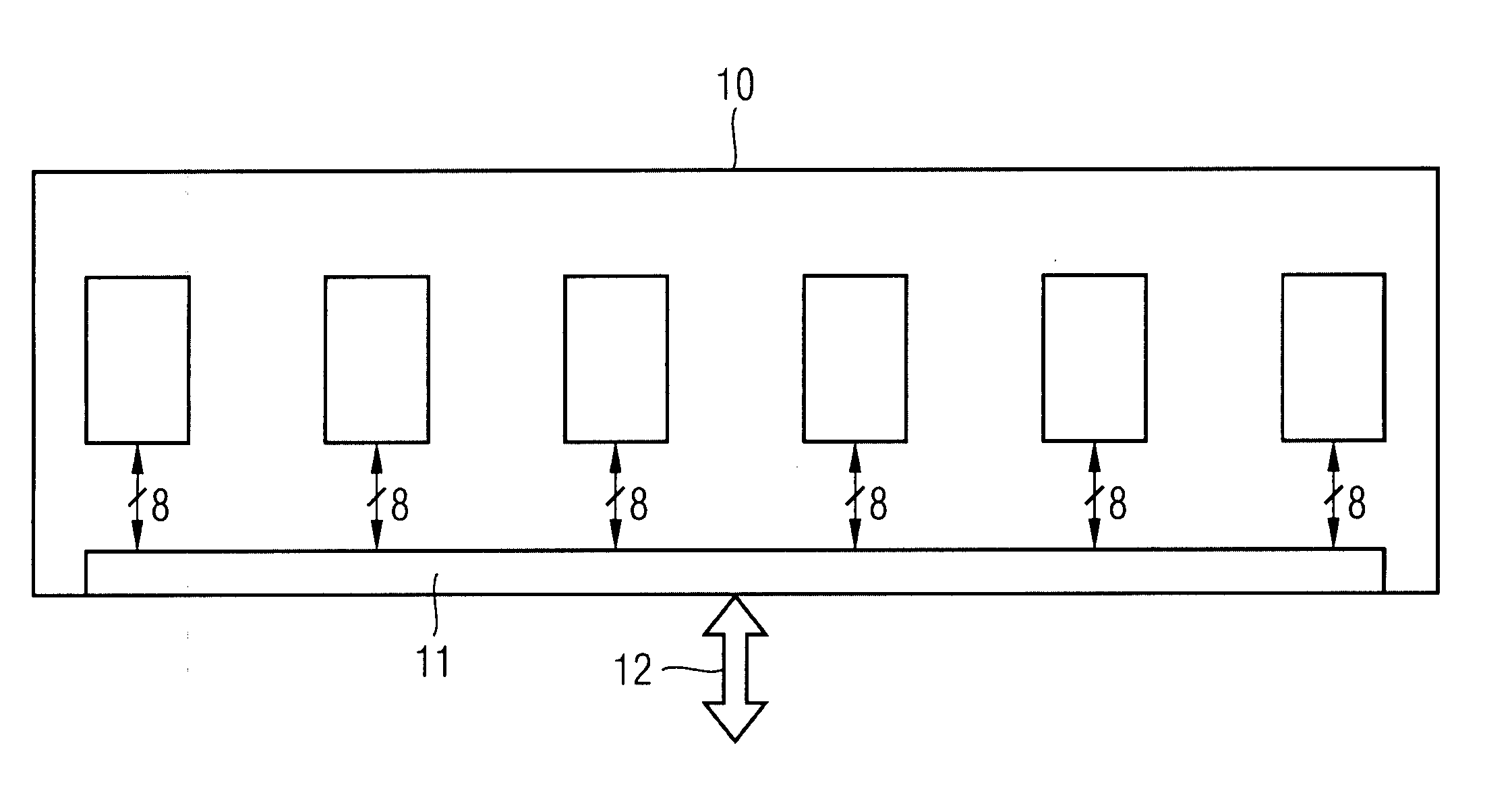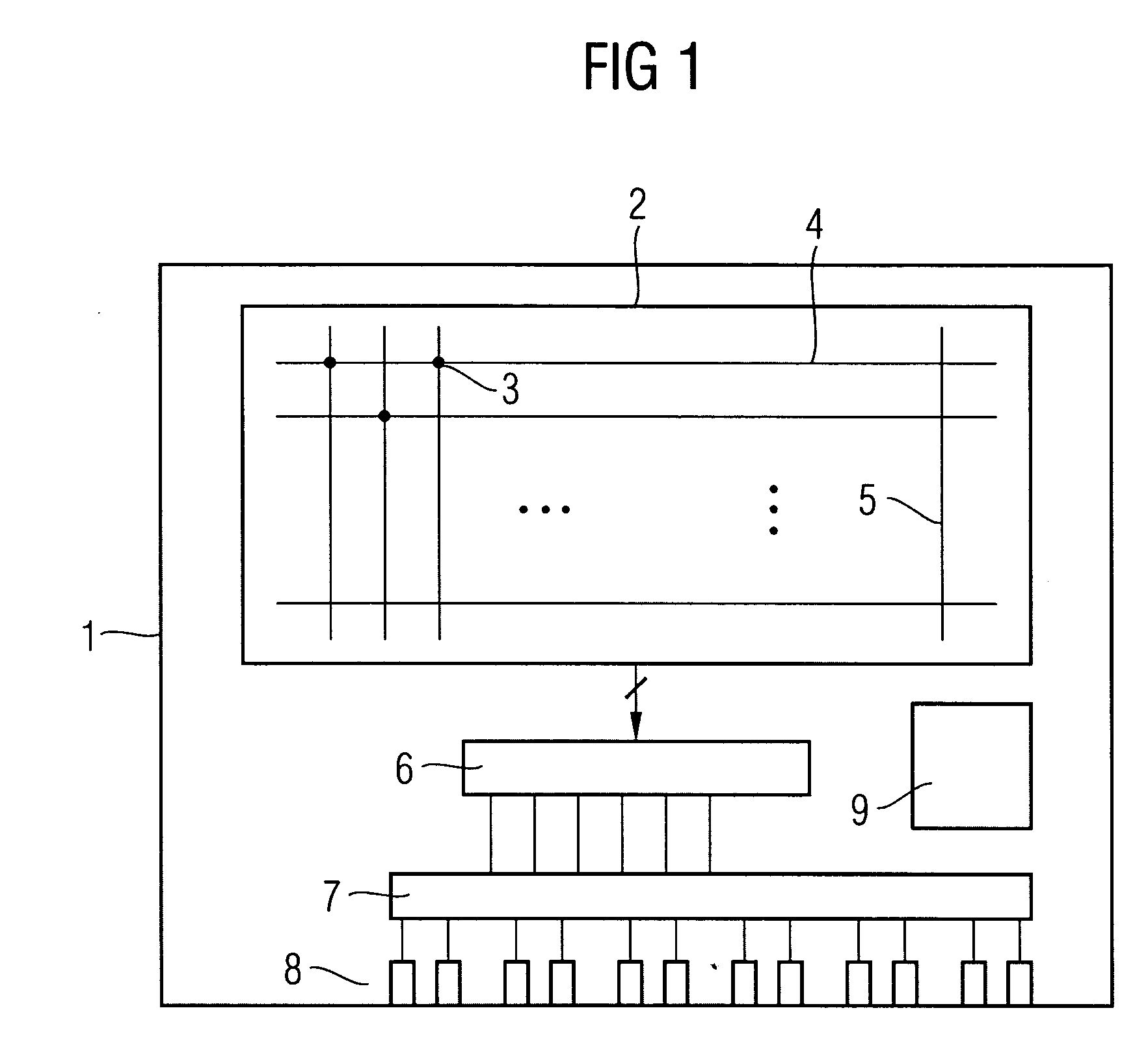Integrated memory device and memory module
a memory device and module technology, applied in the field of integrated memory devices, can solve the problems of double pin count of data ports, affecting reliability and cost of manufacturing such devices, and the inability to handle high bit rate in technological aspects, so as to increase the bit rate and minimize the pin count
- Summary
- Abstract
- Description
- Claims
- Application Information
AI Technical Summary
Benefits of technology
Problems solved by technology
Method used
Image
Examples
Embodiment Construction
[0023]FIG. 1 shows a memory device 1 including a memory array 2. The memory array comprises memory cells 3 arranged on wordlines 4 and bitlines 5. For example the memory cells can be DRAM memory cells, SRAM cells and the like.
[0024] The memory device 1 is designed e.g. as a Double Data Rate memory device from which data can be read out in a burst access which means that by applying an address to the memory array 2, a number of data bits is internally provided for outputting in groups of a number of parallel data bits in a number of successive cycles.
[0025] This is e.g. achieved by simultaneously addressing a plurality of memory areas (banks etc.) which provide data to be read out from the addressed memory cells 3 and forward the read-out data to a pre-fetch buffer 6 wherein the data is latched until it is forwarded to output via a number of output ports 8. The pre-fetch is performed by the pre-fetch read unit 9.
[0026] In conventional memory devices, the number of pre-fetched data...
PUM
 Login to View More
Login to View More Abstract
Description
Claims
Application Information
 Login to View More
Login to View More - R&D
- Intellectual Property
- Life Sciences
- Materials
- Tech Scout
- Unparalleled Data Quality
- Higher Quality Content
- 60% Fewer Hallucinations
Browse by: Latest US Patents, China's latest patents, Technical Efficacy Thesaurus, Application Domain, Technology Topic, Popular Technical Reports.
© 2025 PatSnap. All rights reserved.Legal|Privacy policy|Modern Slavery Act Transparency Statement|Sitemap|About US| Contact US: help@patsnap.com



